This section of the website details general facts about badgers based on studies in areas outside Wisconsin. Badger characteristics, behavior, and ecology are known to vary across their range, so comprehensive study in Wisconsin is needed. This page is divided into the following sections:
- General information
- Physical Characteristics
- Habitat
- Food Habits
- Behavior
- Threats
General Information

Two young badgers playing outside their burrow (Marquette Co).
Badgers are important predators as they are uniquely adapted to digging. Most of their diet consists of burrowing mammals, and thus, badgers provide an important control for rodents and other agricultural pests. Badgers are a protected species within Wisconsin due to the lack of information about their habits, so most of the information found below comes from studies in western populations or endangered Canadian populations.
Physical Characteristics
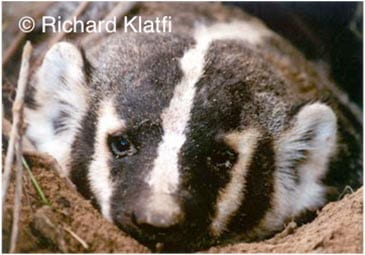
Front view of badger in British Columbia
Roughly the size of a large raccoon, badgers on average are 2 to 3 feet in length, with males being larger than females. Females weigh approximately 15 to 17 lbs whereas males can reach 25 lbs or more.
Habitat
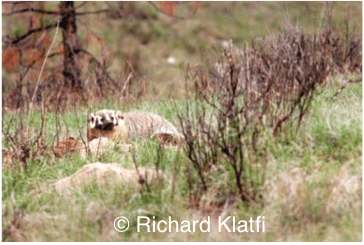
Typical badger habitat in Ontario
Food Habits
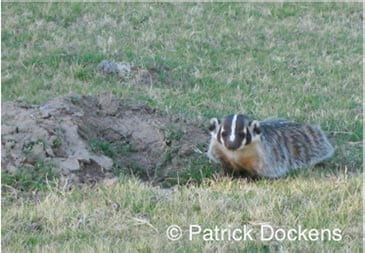
Badgers dig large holes when hunting for prey
To capture prey, badgers give chase and then will burrow after their prey effectively trapping the animal. They are even known to block entrances to burrows dug by communial rodents like ground squirrels prior to digging after the prey.
Behavior
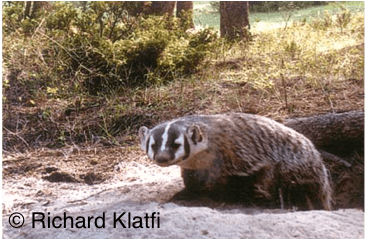
Badgers spend much of their time in burrows
Badgers are highly specialized for digging. When burrowing, they use their large claws to dig into the soil leaving telltale scratch marks along the sides of the burrow. Throughout their territory, badgers will have several burrows and will often switch burrows within two days. Despite their “waddle-like” walk, badgers are highly mobile and have been known to move multiple miles in a single day.
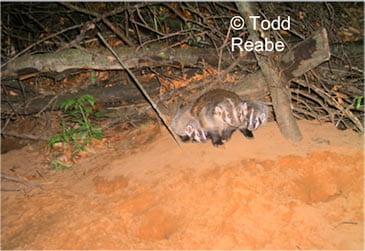
Badgers are solitary except when young
Badger kits (young) are born in spring and remain with their mother until late summer. Then, the young will move sometimes long distances from their mother’s range to establish their own home range. This is a very dangerous time for kits as many are killed while attempting to cross roads and railroads.
Threats
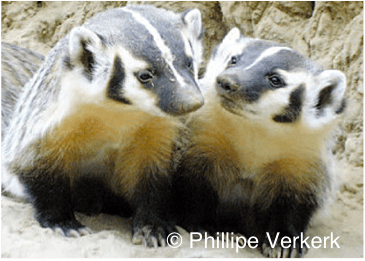
Two young badgers near their burrow
The conversion of native prairie and other treeless habitats greatly affects badgers as well. Badgers require areas with lots of food like gophers and grounds squirrels to survive. With the conversion of native habitat to agriculture and urban areas, badgers will need to range farther in the landscape, exposing them to potential dangers like highways.
Report Burrows, Road kills, and Sightings!
Badgers are a protected species in Wisconsin, but still precious little is known about them. Help us understand one of the most fascinating animals in North America. The more animals we receive, the more questions we can answer.